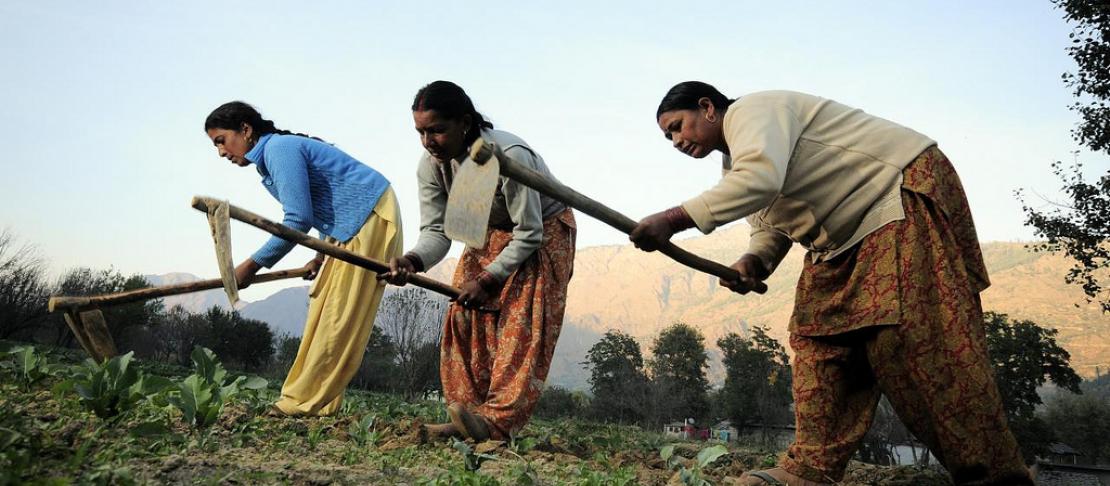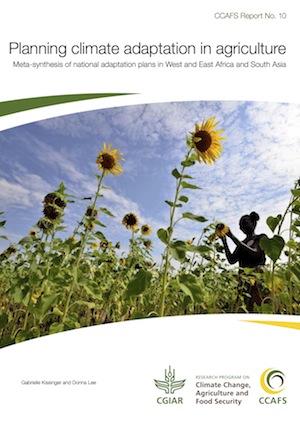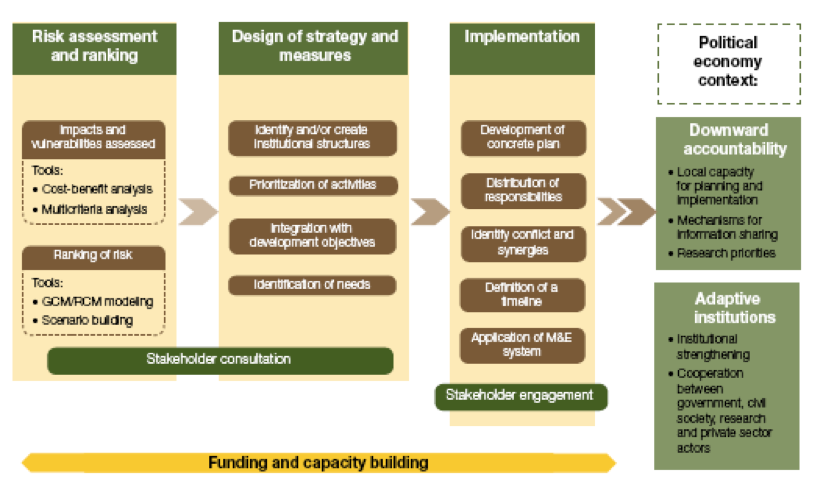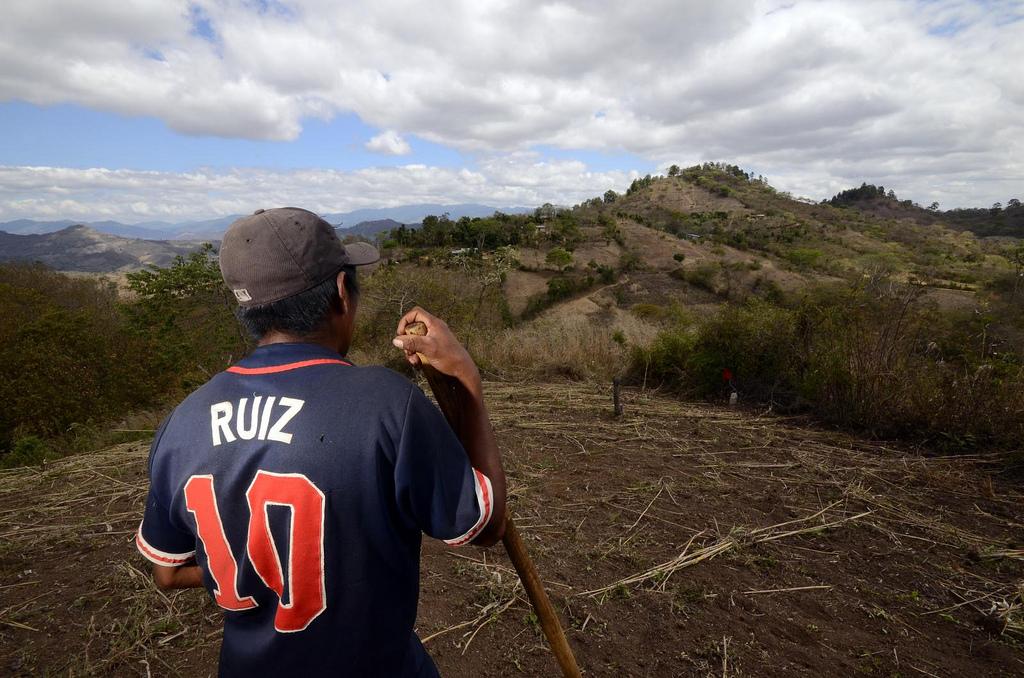New report highlights lessons from national adaptation planning

Climate change will have far-reaching consequences for every aspect of our lives, from the environment we live in, the pests and diseases we face, the industries we work in, the infrastructure we depend on—roads, power stations and electricity networks and the like—to the crops we can grow and the livestock we can raise.
With so many areas needing attention, in 2010 the United Nations Framework  Convention on Climate Change (UNFCCC) introduced the national adaptation plan process to encourage integrated cross-sectoral planning for climate-change adaptation. National adaptation plans (NAPs) are intended as a means to address the most urgent medium- to long-term food security, livelihood and development pressures related to adaptation to climate change.
Convention on Climate Change (UNFCCC) introduced the national adaptation plan process to encourage integrated cross-sectoral planning for climate-change adaptation. National adaptation plans (NAPs) are intended as a means to address the most urgent medium- to long-term food security, livelihood and development pressures related to adaptation to climate change.
A new report from the CGIAR Research Program on Climate Change, Agriculture and Food Security (CCAFS) examines progress in developing NAPs in 12 countries in West and East Africa and South Asia, with a particular focus on agricultural and food security aspects. Planning climate change adaptation in agriculture: Meta-synthesis of national adaptation plans in West and East Africa and South Asia also presents a framework for assessing national adaptation planning processes that gives a 'dashboard' view of country progress on key NAP processes and policy elements.

Analytical framework for assessing national adaptation planning processes.
The study highlights a number of areas of concern in the adaptation planning process. For example, most of the countries conducted impact assessments—the foundation of the planning process—on a purely sectoral basis and many lacked consistent, comprehensive and coordinated approaches in their vulnerability and risk assessments.
As a result, different regions and sectors commonly use different methodologies for their assessments, which makes it difficult, if not impossible, to compare and prioritize risks and adaptation activities across sectors or regions. Most also did not assess the economic impacts of climate risks, which again compromises efforts to prioritize adaptation measures.
Despite these shortcomings, the 12 countries reviewed most commonly prioritize:
1) protecting the most vulnerable and poor (rural) populations;
2) cost-effectiveness (or overall cost);
3) promoting sustainable development and/or natural resource use;
4) improving livelihoods (or avoiding losses); and
5) promoting adaptive capacity.
Another weakness identified by the report is that many of the countries lack an institutional framework to effectively coordinate and implement adaptation activities, many of which are cross-sectoral, although some are in the process of creating new institutional structures to promote cross-sectoral cooperation.
The private sector was also notably absent from most of the planning exercises reviewed. This, combined with shortage of technically well-qualified staff in key institutions, hampered effective and inclusive planning and creates potential problems for implementation of adaptation measures.
Funding is a crucial aspect that seems to be often overlooked. Aligning and mainstreaming activities into national development or sector plans can help identify and procure funding for implementation, especially through government budgetary allocations. However, most of the countries reviewed struggle with this, in large part because of the lack of integrated assessment and planning across sectors.
Many adaptation and food security programs currently being implemented are not well integrated into a broader national strategy, but appear to be driven by bilateral and/or multilateral funding sources. As financing is needed for implementation, adaptation plans should consider how sufficient finance can be mobilized, particularly at local levels where adaptation response measures are most crucial.

A new report states that Many active adaptation and food security programs are not well integrated into a broader national strategy, which can affect funding and efficiency.
Photo: N. Palmer (CIAT)
The report makes a number of recommendations to improve the NAP process:
- Strengthen capacity to identify and rank climate risks and prioritize response activities.
- Downward accountability and adaptive institutions are critical. Ongoing assessment of institutional frameworks for adaptation planning and implementation that can effectively coordinate and implement a holistic national adaptation plan will be critical at all levels, including local ones.
- Define long-term solutions for adaptation planning and implementation funding that is sufficient and geared towards building strong institutions and capacity.
- Strengthen analytical capacity for integrated approaches to adaptation planning that a) considers combinations of crop, livestock, rangeland, forestry, fishery and agroforestry activities and aquatic and ecosystem function needs and b) helps define adaptation and mitigation synergies.
- Focus policy analysis and action towards integrating adaptation strategies into development objectives and existing sectoral policies, and provide funding for implementation at least in part from national budgetary allocations.
- Widen stakeholder engagement in assessment, design and implementation of adaptation plans.
The CCAFS report will contribute several activities related to national action plans during November, including a two-day learning workshop on 13–14 November, on national adaptation plans and agriculture, parallel to the COP19 activities. An official COP19 side event on Agriculture in National Adaptation Plans: Experiences and Lessons Learned, as well as a discussion at the Global Landscape Forum on if, and how, NAPs can provide a means to address the nexus between water, food security, forests and energy.
Download the new report:
This story was prepared by Paul Neate, freelance science writer. Gabrielle Kissinger, Lexeme Consulting and author of the new Report, has contributed to the story.
For live updates from the UN Climate talks in Warsaw follow @cgiarclimate and @bcampbell_CGIAR using #GLFCOP19.
